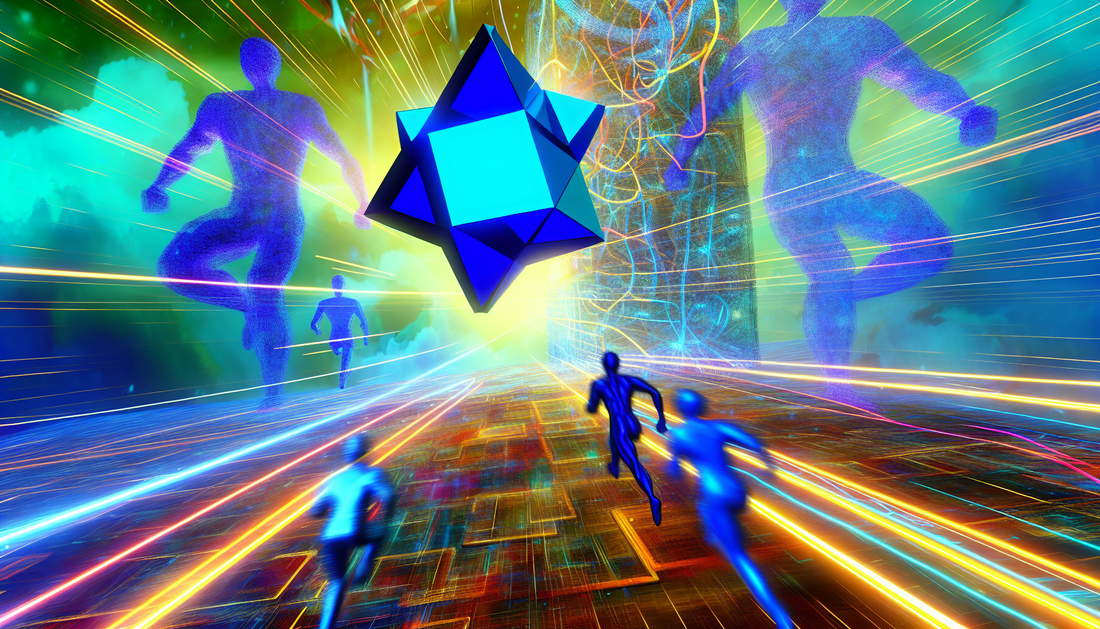
QuarkChain vs. The Giants: A Scalability Showdown
Share
QKC vs. Rivals: How QuarkChain Stacks Up in the Crypto Space
QuarkChain (QKC) is a blockchain-based cryptocurrency that aims to solve the scalability issues that plague many older platforms. Focusing on providing efficient, secure, and scalable solutions, QKC competes with several other blockchain projects that target similar goals. Below, we compare QKC to its primary rivals in the space, including Ethereum, Polkadot, and Zilliqa.
Scalability
One of QuarkChain’s key differentiators is its two-layered architecture designed to facilitate high scalability through sharding. While scaling through Layer-2 solutions is possible on Ethereum and other platforms, QuarkChain integrates this from the beginning, making it a core feature of the network. Polkadot’s parachain and Zilliqa’s own implementation of sharding offer similar scalability improvements. However, QuarkChain's approach claims to offer near-linear scalability, which could result in a higher transaction throughput under optimal conditions. While other platforms have significantly larger development communities and resources, QuarkChain’s focus on parallel throughput through sharding remains competitive.
Interoperability
Compared to Polkadot, which is designed with network interoperability through its heterogeneous multi-chain architecture, QuarkChain lags slightly in this area. Polkadot’s interoperability standard allows various blockchains to operate independently yet communicate through the central relay chain, making it more adaptable to different use cases. QuarkChain has made moves to enable cross-chain functionality, but it does not currently have the range of interoperability solutions offered by rivals. This is particularly crucial in an era where blockchain ecosystems are expanding and there is a high demand for cross-chain features.
Consensus Mechanism
QuarkChain utilizes a hybrid consensus mechanism combining Proof of Work (PoW) and Proof of Stake (PoS). This hybrid aims to merge the security benefits of PoW with the energy efficiency and scalability of PoS. Ethereum, prior to shifting towards its full PoS Ethereum 2.0 framework, also relied on pure PoW, similar to Bitcoin. Zilliqa, on the other hand, utilizes an efficient PoS with sharding that is arguably simpler than QuarkChain’s hybrid model. Each consensus algorithm comes with its own trade-offs in terms of security, decentralization, and efficiency, but QuarkChain's mixture is a unique approach intended to blend the best aspects of each.
Developer Ecosystem and Adoption
The developer community and third-party applications built on QKC are small in comparison to Ethereum, which is by far the dominant player in this field. Polkadot has rapidly gained traction as developers seek more scalable alternatives, and Zilliqa, even though smaller in size than Ethereum, maintains a broader development framework than QuarkChain. This limited development ecosystem may impact QuarkChain’s ability to compete for mainstream adoption in the decentralized finance (DeFi) and non-fungible token (NFT) spaces.
Conclusion
When compared to its larger and better-known rivals, QuarkChain remains compelling due to its technical innovations, especially in scalability via sharding. However, it has significant ground to cover in both its developer ecosystem and interoperability in order to compete with titans like Ethereum and newer scaling-focused platforms like Polkadot.
